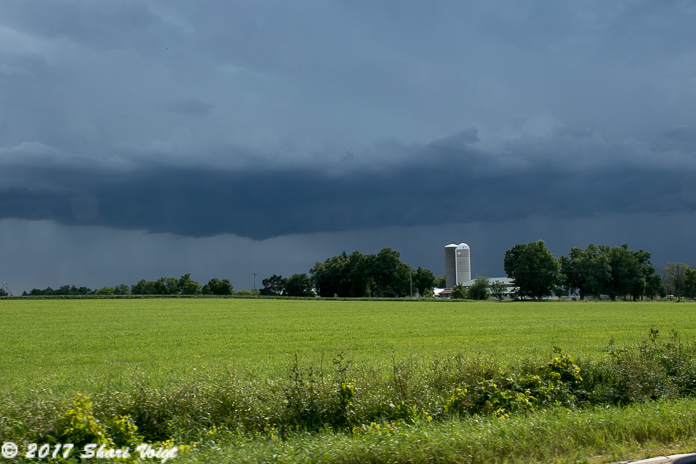When Water Leaks from the RV Slide Ceiling

First off remember this rule: WATER ALWAYS SEEKS THE PATH OF LEAST RESISTANCE.
This topic has been raised by many an RVer, when they discover water dripping from the ceiling of their slide out. The source of the leak is from one of two places … rain or water condensation being discharged from the roof top air conditioner.
Water, whether from rain or your roof mounted air conditioner, will pool. And gravity will cause it to seek and reach the lowest level … the ground. How it gets there is determined by the obstacles in its path. Here is one way water may be finding its way into your rig: through your RV slide out ceiling.
In the picture above, the external upper slide seal is not in proper position when the slide is fully extended. Water dripping from the roof or through the slide topper will flow along the gasket. In the spot where it is not in its proper position the water will follow the contour of the seal and drip behind the lip.
The gasket should be on the outside of this lip on the top of the slide to divert water away from the inside of the lip. On the inside of the lip, there is a structural seam with screws or rivets that hold the slide together. If this metal lip and the items behind it aren’t sealed properly by the external upper slide seal and caulking, it provides an opportunity for water to permeate through to the interior of the slide and coach.
A – External Upper Slide Seal.
B – Interior Ceiling.
C – The lip which the External Upper Slide Seal abuts against when the slide is fully extended.
D – Interior Slide Seal.
Slide Toppers Help, Unless They’re Pooling Water
If you have slide toppers, chances of this happening are reduced. The slide topper will shed water dripping off the roof, carrying it beyond the edge of the slide. However, if your slide toppers are old, sagging, and pooling water, water can seep down along the seal, through the gap illustrated above. Regular inspection of your slide toppers and slide seals is important. Failure to do so can result in leaks as well as mold.

When Slide Outs Don’t Seal
Two factors come into play when the external upper slide seal doesn’t seat properly when the slide is extended:
- The seals dry out over time, lose their elasticity and shrink.
- The center of the slide sags in the middle. Whether this is due to poor design, structural fatigue or someone stood where they shouldn’t have is anyone guess. Our slide sags a bit in the middle and I’ve noticed many other RV’s with the same issue.
Our motorhome has one slide out (used to illustrate this post) where the upper slide seal doesn’t roll out and set properly when the slide is extended. Because of this, when I’m finishing our external set up and have the ladder out to affix the windshield shade screens, I also inspect the top of the slide, and use my awning tool to reach the gasket and pull it out to the proper position. You could also climb up on the roof to do this with your hand, but this is easier and safer.



